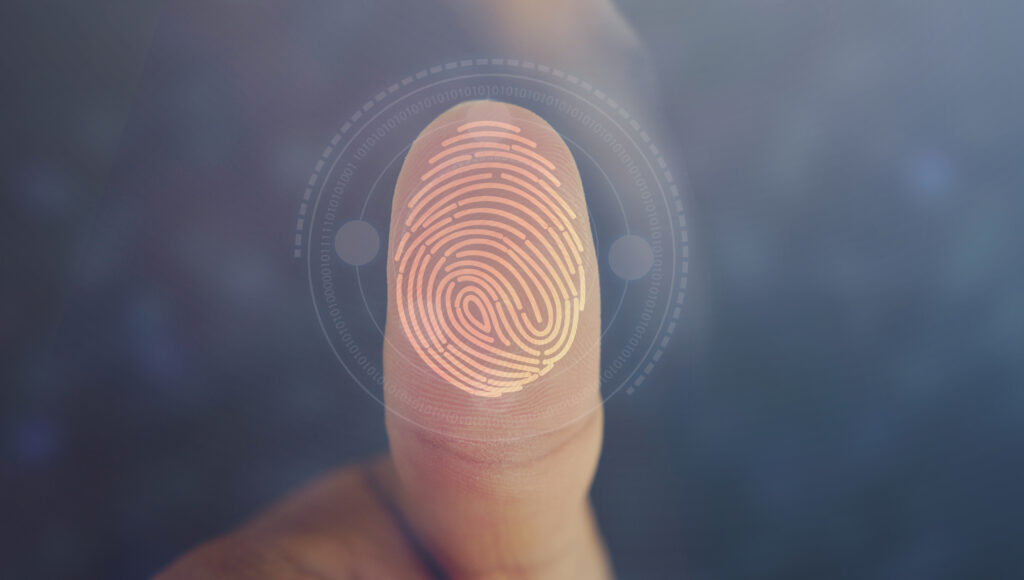When you ask yourself questions like “Am I asexual?” or “What is asexuality?”, you are already engaging in the brave and deeply personal work of self-discovery.
Many people grow up in societies where sexual attraction is treated as the default, often leaving those who identify on the asexual spectrum feeling invisible or misunderstood. Yet emerging research makes it clear: you are not alone, and you are not “missing” anything essential. You are a complete, valuable person who deserves love, respect, and meaningful connection — whether or not you experience sexual attraction.
Asexuality is not a defect or an absence of humanity. Instead, it is simply one of many valid expressions of meaning. Your life can be rich, joyful, and deeply fulfilling on your own terms. By focusing on self-acceptance and self-awareness, you can create a life grounded in identity, values, friendships, and community.
In this article, you will learn more about the asexual spectrum, explore important distinctions such as aromantic vs asexual, and gain five proven tips backed by scientific evidence to help you fully embrace who you are.
Understanding the Asexual Spectrum
So, what is asexuality? Asexuality refers to experiencing little to no sexual attraction. If you are on the asexual spectrum, you may still feel romantic attraction, emotional intimacy, or a desire for partnership, even if sex is not central to your life. For others, both romantic and sexual attraction may be absent. This wide range of experiences is what makes the asexual spectrum so diverse and personal.
A recent Scientific American review highlights how research into asexuality has shifted and grown significantly over the past decade, showing that asexuality is neither rare nor obscure, and is – rightly – no longer considered a disorder in the DSM-5. With that in mind, we believe asexuality deserves greater recognition as a valid sexual orientation.
In fact, studies show that even if you identify as asexual, you can create satisfying, committed relationships that look just as strong as those of sexually active people when built on trust, communication, and shared goals.
The key takeaway: sexual attraction is not and does not need to be the defining feature of human relationships or your personal identity. You can design a life that is whole and meaningful regardless of where you land on the asexual spectrum.
A Common Glossary of Terms for the Asexual Spectrum

Because the asexual spectrum includes a variety of nuanced experiences, it can help to understand some of the common terms people use to describe themselves. You do not need to adopt any of these labels; simply knowing them may help you feel seen and make it easier to connect with supportive communities.
- Asexual (Ace): You experience little to no sexual attraction. Many aces still desire closeness, companionship, or romance on their own terms.
- Gray-asexual (Gray-ace): You experience sexual attraction rarely or under certain, limited circumstances; this identification still fits within the asexual spectrum.
- Demisexual: You experience sexual attraction only after forming a strong emotional bond, a pattern recognized in spectrum research and community accounts.
- Aromantic: You experience little to no romantic attraction. This is separate from sexual attraction and can intersect with asexuality in many ways (more on those distinctions later in this article).
- Romantic orientations (e.g., biromantic, homoromantic, heteroromantic, panromantic): Labels that describe whom you experience romantic attraction toward, as distinct from sexual attraction.
- Queerplatonic relationships (QPRs): Deep, committed partnerships that may not include sex or romance, yet still carry the intimacy, support, and significance of traditional relationships (research on ace relationships underscores the central role of communication, trust, and shared purpose in relationship quality).
- Aceflux: Your experience of asexuality fluctuates over time, a fluidity acknowledged in contemporary spectrum frameworks.
This article is meant to be direct and accessible, and if you want to go deeper into the scientific literature behind the asexual spectrum, you could look into the following detailed psychological studies:
Aromantic vs Asexual: Clarifying Common Misunderstandings
One of the most frequent questions you might have heard is around the terms aromantic vs asexual – what’s the difference? While these terms are often grouped together, they describe fundamentally different components of attraction.
- Asexual: refers to little or no experience of (physical) sexual attraction.
- Aromantic: refers to little or no experience of (emotional) romantic attraction.
While these terms can overlap, they do not always. For instance, you might identify as asexual yet still experience romantic attraction and desire a loving partnership. Or you might identify as aromantic and still enjoy sexual activity.
Recent research published in Springer (2025) emphasizes the importance of acknowledging these distinctions, as individuals often find empowerment in understanding the precise ways they relate to attraction.
Recognizing where you fall – or even deciding that you do not need to define it exactly – can bring clarity and relief to what may otherwise be a source of confusion or frustration.
5 Proven Tips for Self-Acceptance on the Asexual Spectrum
Drawing on scientific studies and community wisdom, here are five evidence-based tips to help you strengthen your self-acceptance and thrive.
1. Recognize That Your Identity Is Valid

The first step in accepting yourself on the asexual spectrum is to internalize that your orientation is not “less than” others. Research published in a 2024 study emphasizes how asexuality challenges traditional assumptions that sexual attraction is universal. Instead, the authors emphasize that sexuality is far more diverse than once assumed.
If you find yourself asking, “Am I asexual?”, remember that the answer does not need to be final or absolute. You may discover that your experience shifts over time, or you may feel consistent in your identity. Either way, both are valid – you are valid and valued. Allow yourself the freedom to exist without pressure to conform.
2. Build Connections with an Encouraging Community
Finding others who love and accept you for who you are is crucial. This 2015 study noted how community support can help reduce feelings of isolation and can strengthen well-being for people on the asexual spectrum.
Whether online or in person, connecting with others who share similar experiences can normalize your feelings and give you the encouragement you need. Supportive communities remind you that you are not alone, even if mainstream culture is prone to overlooking asexuality.
3. Focus on Where You Find Meaning
While you may not experience sexual attraction, you can absolutely craft a fulfilling life by focusing on other dimensions of meaning. Career achievements, creative expression, deep friendships, and family bonds can all be sources of profound satisfaction in your unique life journey.
A 2022 Frontiers in Psychology study on asexual relationships highlighted that intimacy and fulfillment do not depend on sex—they depend on communication, trust, and shared purpose. Similarly, University of Edinburgh research in 2024 underscored that identity is not defined by sexual activity and is instead primarily shaped by the values and commitments you bring to your life.
Even if you cannot change your asexuality, you do have complete agency in deciding how to create purpose and joy in the day-to-day of your existence.
4. Redefine Relationships on Your Own Terms

Self-acceptance also means giving yourself permission to create relationships that work for you. Asexual individuals thrive in partnerships where expectations align with their personal preferences. That might include romantic companionship without sex, platonic life partnerships, or strong networks of chosen family.
What matters most is that you define your relationships based on mutual respect and shared values. Sex is only one possible dimension of intimacy, and for many on the asexual spectrum, it is not necessary at all.
5. Work with an Asexual-Affirming Online Therapist
Online therapy – which we specialize in at Makin Wellness – can offer a steady, judgment-free space to explore where you fit on the asexual spectrum, strengthen your language for self-description, and grow your confidence in relationships and community.
As part of your therapeutic relationship, an asexual-affirming clinician centers your lived experience and treats your orientation as valid, supporting your self-acceptance and helping to reduce any minority-stress load.
Practically speaking, this can look like:
- Identity exploration without pressure to sexualize your life. You and your online therapist can map how you experience attraction, explore your desire for companionship, and decide on appropriate boundaries. Asexual-affirming guidance outlines concrete assessment and psychotherapy practices tailored to ace clients, including attention to compulsory sexuality and intersectional identities.
- Skills for navigating minority stress. Many people on the asexual spectrum report stigma in healthcare and daily life, which can influence mood and a sense of belonging. Evidence shows that affirming cognitive-behavioral therapy (CBT) can reduce transdiagnostic distress by directly targeting minority-stress processes.
- Communication and boundary-setting tools for relationships. Affirmative CBT and related protocols teach concrete skills for assertive communication, values-aligned decision-making, and collaborative problem-solving—core ingredients that support satisfying ace partnerships
- Support that acknowledges real disparities while centering your strengths. Recent population data note elevated depressive symptoms among some asexual groups, linked in part to minority stress. Online therapy does not aim to change your orientation; it offers coping strategies, meaning-making, and community connection to buffer stress and enhance your wellbeing.
Bottom line: Affirmative, evidence-based online therapy can offer you structured tools to understand yourself, set boundaries that feel right, and design relationships and communities that match your values—without centering sex as a requirement for fulfillment.
Bringing It All Together
Living on the asexual spectrum means acknowledging that your life does not need to revolve around sexual attraction in order for you to be whole. Whether you are wrestling with the tension of aromantic vs asexual, directly asking “Am I asexual?”, or simply exploring broader questions like “What is asexuality?” know that this kind of self-examination can help you feel at peace with yourself and your place in the world.
Through science-backed strategies like recognizing your identity as valid, finding an encouraging community, focusing on personal sources of meaning, restructuring your relationships, and seeking out online therapy when you need it, you can cultivate greater self-acceptance and confidence.
Remember: your humanity is not defined by how much or how little sexual attraction you feel. You can experience love, purpose, and fulfillment in countless ways that align with who you are.
Explore Your Asexuality with Makin Wellness
At Makin Wellness, we understand how important it is to feel supported in your journey of self-discovery. If you have questions about the asexual spectrum, your identity, or how to navigate relationships, you deserve a safe space to talk it through.
Our specialized online therapists are here to listen and provide guidance in a supportive, understanding environment—at a time that works best for you. Simply put, you do not need to walk this path alone. Reach out to us today to take the next step toward embracing your authentic self and prioritizing what matters.
Further Reading:
- You Are Not Alone! How To Find An LGBTQ Therapist Near Me
- How Narrative Exposure Therapy Helps You Overcome PTSD And Break Free From Generational Trauma
- Understanding The 5 Different Types Of Autism Spectrum Disorders: A Guide To Diagnosis And Treatment
- Learn How to Overcome Trust Issues with 5 Effective Tips







